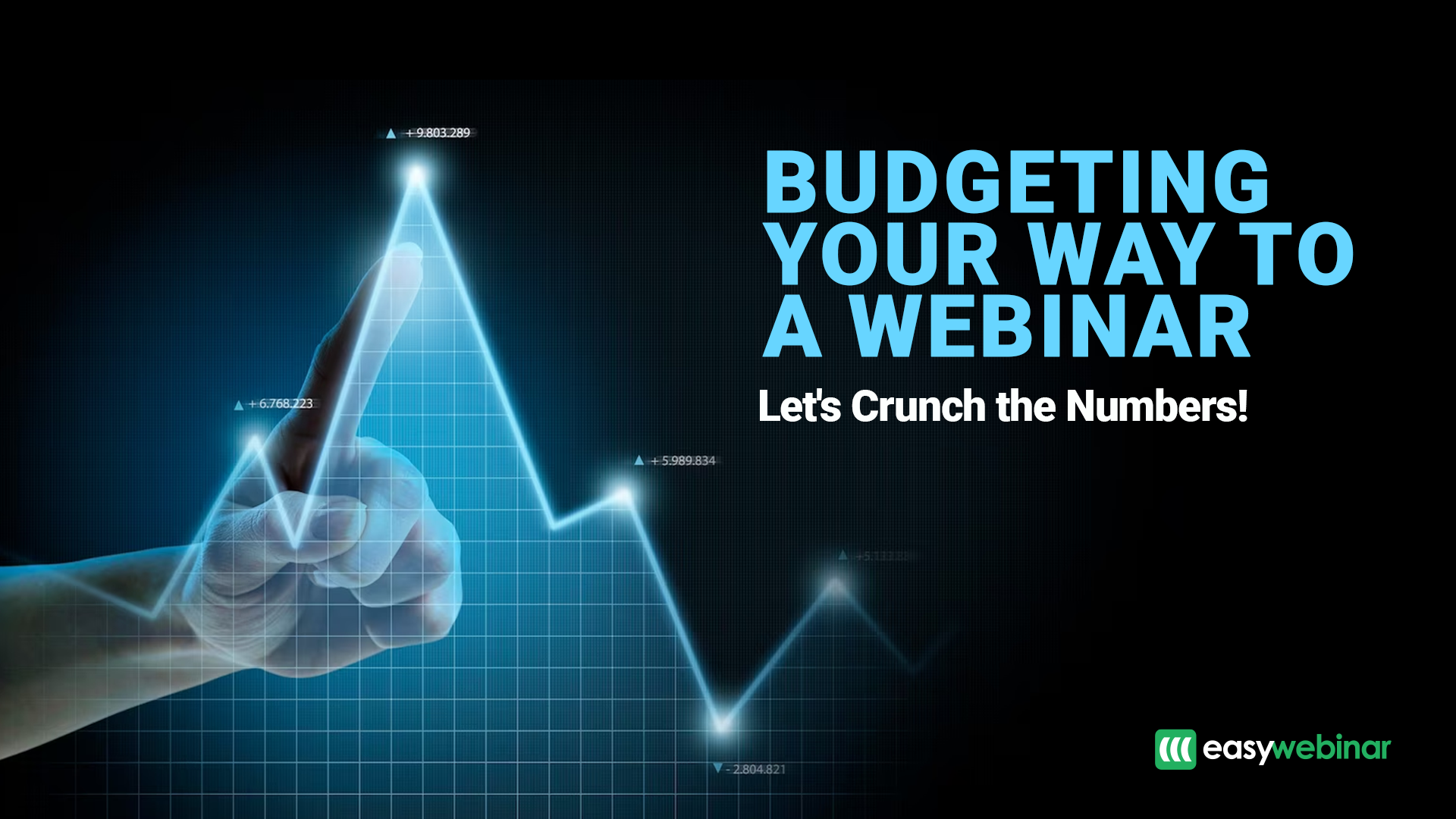Budgeting Your Way to a Webinar: Let’s Crunch the Numbers!

Hey there, are you ready to dive into the exciting world of webinar planning?
Whether you’re a seasoned pro or a newbie in the event management realm, one thing remains constant: budgeting is key. In this blog post, we’re going to walk you through a fun and interactive plan to help you budget and manage your expenses for a webinar. So, grab a cup of coffee, sit back, and let’s crunch those numbers together!
Step 1: Define Your Goals and Objectives
Before you start allocating funds, it’s important to have a clear understanding of your webinar’s goals and objectives. Are you aiming to generate leads, educate your audience, or promote a product or service? Defining your objectives will help you determine the necessary budgetary components and prioritize your expenses accordingly.
Step 2: Outline Your Essentials
Now that you have your goals in mind, let’s identify the essential elements that will make your webinar shine. Start by considering the platform or software you’ll be using for hosting the event. Research various options, compare their features, and choose one that aligns with your budget and requirements.
Next, think about your guest speakers, presenters, or panelists. Will you be bringing in industry experts or relying on in-house talent? Remember to account for their fees, travel expenses (if applicable), and any equipment they may require.
Step 3: Calculate Marketing and Promotion Costs
It’s time to spread the word about your awesome webinar! Allocate a portion of your budget for marketing and promotion activities. This can include social media advertising, email marketing campaigns, content creation, and even graphic design services. Don’t forget to consider any expenses related to creating landing pages or registration forms.
Step 4: Consider Production and Technical Needs
To deliver a seamless webinar experience, think about the technical aspects involved. Will you require audiovisual equipment, such as microphones, cameras, or lighting? If you plan to incorporate multimedia elements, like videos or slideshows, allocate funds for their creation or licensing.
Additionally, consider investing in a reliable internet connection and backup solutions to prevent any unwanted technical glitches during your event.
Step 5: Plan for Participant Engagement
Engaging your audience is vital for a successful webinar. Consider allocating a portion of your budget for interactive tools, such as live polling, Q&A software, or virtual chat moderators. These features will make your webinar more dynamic and encourage active participation.
Step 6: Don’t Forget about Contingency
While we’d all love for everything to go according to plan, it’s wise to set aside a contingency fund. Unforeseen expenses can crop up, such as last-minute speaker cancellations, technical troubleshooting, or additional marketing needs. Having a buffer will ensure you’re prepared to tackle any unexpected challenges without compromising the quality of your webinar.
Step 7: Monitor and Track Expenses
Throughout the entire planning process, keep a close eye on your expenses. Utilize budgeting tools or spreadsheets to monitor your spending and compare it against your initial allocations. This will help you stay within your budget and make adjustments if necessary.
Remember, budgeting is an iterative process, so don’t be afraid to reevaluate and reallocate funds as you progress. Flexibility is key!
So, there you have it—a lively and interactive plan to budget and manage your expenses for a stellar webinar. By following these steps and adapting them to your unique event, you’ll be well-prepared to deliver an engaging and impactful webinar experience. Now go forth, unleash your creativity, and rock that webinar budget like a pro!
Join EasyWebinar and get a 14-day free trial now.
Happy planning!
